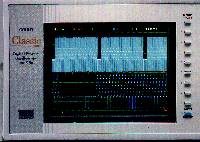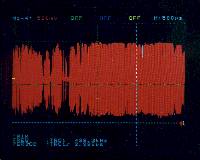Classic 6000 Series
Complex Waveform Display and Analysis
|
|
TRUTRACE - A TOTALLY NEW CONCEPT IN THE DISPLAY OF COMPLEX WAVEFORMS
|
Until now analog scope users who want more capability, or DSO users who need to see more fine waveform detail, have been frustrated by the limitations in existing instruments. But not any more.
Gould Classic 6000 Series digital storage oscilloscopes address the display of acquired signals and derived traces in a new and innovative way, using a patented display compression technique: TruTrace®. For the first time, the effect of all the data points within a complex waveform - even 200 k in length - can be seen in a compressed raster-scan overview.
TruTrace accomplishes this by displaying compressed traces as grey-scale images; traces very similar to those which an analog, real-time oscilloscope would produce from the same signals. This means that anomalies, for example in complex waveforms, transients or noisy signals, can be recognized readily without time-consuming windowing and zooming.
At the touch of a button TruTrace performs an intelligent compression of acquired data in which each data point contributes to the displayed waveform and intensity variations are produced, allowing the display of far more information about an acquired signal than available with conventional DSOs. Intensity variation is also used to highlight areas where traces overlap, making it impossible to "lose" one trace entirely behind another.
Because the acquired data is always accessible, any displayed trace can be examined in more detail should it be necessary. The independent, per-channel control of Y-zoom and Y-position provided in the Classic 6000 Series allows personalised display formatting to suit the application. TruTrace can be used to display any trace or combination of up to eight traces - transients, zoom traces, derived traces which result from analysis operations, or recalled (previously stored) traces.
TV Waveform Generator - VCR Pattern Video Output
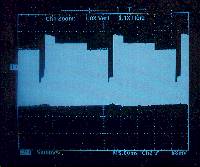 |
An ordinary, constant intensity, Digital Storage Oscilloscope can only display amplitude peaks but cannot distinguish any signal detail within a complex waveform. |
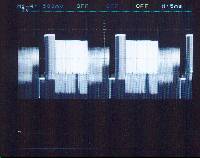 |
The same signal on Classic 6000 with TruTrace, clearly shows differences between constant amplitude lines, lines with 2.84 MHz at lower amplitude, lines with 4.43 MHz subcarrier having a succession of increasing amplitudes within a line, and the frame blanking and synchronizing area. |
Conventional DSO signal from |
|
|
Same signal from Classic 6000, |
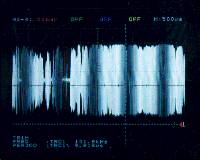 |
User Defined Measurements And Color Trace Scaling - Two More Major Features
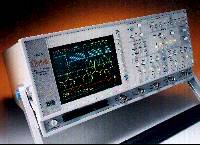 |
|
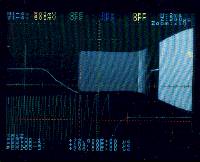 |
Designed with busy users in mind, Classic 6000 Series digital storage oscilloscopes have the ability to display measurements in defined engineering units -such as bars, watts, joules - enabling results to be interpreted quickly and accurately. No need for complicated conversions from electrical parameters. Mass storage of data to disk or RAM gives users the opportunity to analyze detailed results at a later stage, saving valuable time when working at remote locations. Interpreting test results is simplified; Classic 6000 Series help speed analysis. |
 |
Complex screen displays with numerous traces of information to identify can be a major problem. But not with Classic 6000 Series which incorporate color trace markers and annotations which automatically match with respective traces, making identification quick and easy. No more frustration trying to interpret a mass of confused waveforms. |
Updated 17 March 1998

